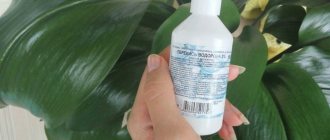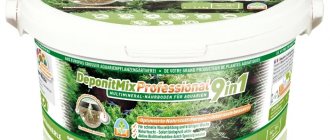A bouquet of flowers has always been and will always be a pleasant gift for March 8, a birthday, or a wedding. Having placed it in a vase, I want it to please us for as long as possible. But any living organism, including flowers, has its own life span, especially cut ones. Then how can you extend the life of flowers? The main rule: you need to be able to properly care for them. The techniques for restoring and maintaining freshness are not complicated, they are accessible to everyone. And this is what we will talk about today.
Is it possible to water flowers with water from an air conditioner?
The condensate formed during operation of the air conditioner is distilled water. The distillate is completely devoid of mineral salts, which is even good for some flowers. Such a liquid would be useful for watering epiphytes (the same orchids) and predator plants.
However, in this case, the aquatic environment is filled with fine dust and all kinds of bacteria that have entered it from the air. Purely theoretically, water from expensive air conditioners with good filters may be of higher quality, but the validity of this version can only be confirmed in a laboratory.
Advantages and disadvantages of irrigation from an artesian well
The temperature of water from an artesian well ranges from +2℃ to +4℃ at a depth of 5 m. In summer, the temperature rises slightly to a range of +5℃ to +6℃, from +8℃ to +15℃, if you take water higher 5 meters. This is too low a degree threshold to be suitable for irrigation. The air temperature during the dacha and garden season is always higher. And when it becomes as cold outside as the artesian water is cold, then all the crops have already been harvested from the beds, there is nothing to water - the harvest has been harvested.
Advantages of irrigating crops from an artesian well:
- environmental cleanliness, absence of man-made pollution;
- high level of productivity – providing moisture to a large area of the site;
- the constant presence of water, regardless of fluctuations in precipitation or groundwater flow;
- quick payback of initial costs when constructing a well.
Disadvantages of watering with artesian water:
- the need to install water filters, otherwise there will be oversaturation with mineral microsubstances;
- independent soil oxidation (if filters are not installed on the water supply system);
- with an excess of manganese, the soil becomes unsuitable for further planting of crops.
Water from artesian depths may contain various minerals, an excess of which can destroy plants in the garden beds. These may be salts, gases, high levels of iron, manganese and other natural impurities. If filters are not installed, then the garden should be planted with crops that are not picky about the level of alkalis and other impurities contained in the water. Or you can constantly keep the water from the well in a special tank. And when using it, the bottom layer of water should not be used at all, but drained outside the garden.
Mineral water for irrigation
In the case of mineral water, it all depends on what plants live in the house. If these are epiphytes, cacti and other succulents, such watering is contraindicated for them. Mineral sparkling water contains too many salts, and desert dwellers require poor soil similar to what is available in nature.
For ordinary indoor plants, such as begonias and pelargoniums, such watering is acceptable as a one-time measure. That is, they are not watered with mineral water constantly, but from time to time. Before this, you need to release the gas from the bottle by removing the cap and waiting 10-15 minutes. Carbon dioxide bubbles can damage plant roots, so you need to get rid of them.
Flowers should absolutely not be watered with sweet soda. Plain water with sugar can be used as an infrequent feeding. Apply it once a month. Glucose accelerates photosynthesis, which has a positive effect on plant growth. The fertilizer is suitable for home roses, ficuses, and cacti. Prepare a solution from 1 tbsp. l. sugar per 1 liter of water.
What to do to keep a bouquet of tulips in a vase longer
Choose flowers that are just beginning to open their buds.
Tulips are big water drinkers, so you will have to add some water to them and cut off a little stem every day.
They love cold water and won’t mind if you put even a piece of ice in the vase.
You can place bloomed tulips overnight in a cool, dark place, wrapped in paper. This will refresh them well. And during the day it is better for them to stand in the shade.
These flowers have a sweet tooth, feed them with 70 grams of sugar (per liter of water), and to avoid rotting of the dense stems, add a pinch of salt.
What happens if you pour boiled and hot water on it?
In most Russian cities, the water flowing from the tap has increased hardness. As a result, after watering, plant roots suffer, and the surface of the soil becomes covered with a salt crust over time.
We recommend: Why do indoor plants feel cramped in a pot and how do you know when it’s time to replant them?
By watering plants with boiled water, you can get rid of the problem factor. It is first left to sit for 2-3 days to saturate it with oxygen. With this method of watering, the soil in pots must be loosened regularly so that air can reach the roots.
Professionals advise using hot water to water plants that do not bloom for a long time or refuse to grow. Actually, it should not even be watering, but a shower. The heating temperature is no more than 38° C, otherwise the flowers will “cook”. What's the trick here?
This procedure will become stressful for the plant and will bring it out of the state of unplanned sleep. At the same time, water jets will wash away pests, if any, from the flower. The shower cannot be used for specimens that have pubescent leaves (violets, begonias).
Roses
When choosing roses, you should give preference to those with green sepals. The best time to buy roses is early in the morning; such roses are saturated with moisture and can last much longer than evening roses. Do not ask the seller to process the lower part of the stem; it is better to do it yourself at home. Simple rules will help you preserve roses longer.
- Roses purchased in cold weather should not be placed immediately in water. Place them on the table and leave for half an hour. Only then start processing them.
- The lower leaves that end up under water in the vase are removed to avoid rotting and deterioration of the composition of the water.
- We cut the stem with pruning shears in a basin of water or under running water. Each time we cut the stem diagonally so that water penetrates into the stem.
- If you want the flower buds to not wilt longer, shorten the stem to 30-40 cm. The closer to the bud the water is absorbed in the stem, the faster it will reach the bud and the longer the flower will not wither.
- The stem of the rose is immersed in water up to half its length.
Is it possible to water flowers with water from an aquarium?
It has been noticed that when watered with aquarium water, indoor plants come to life and begin to actively grow and bloom. The magical effect is easy to explain. Fish, with their secretions, enrich the water with organic matter and at the same time make it soft.
With this type of watering, mineral fertilizers can be applied less frequently or not at all. You just need to take into account that at the time of taking water from the aquarium, there should be no traces of drugs for treating underwater inhabitants and other chemicals in it.
How to keep a bouquet of flowers in a vase longer: general rules
In order to keep a bouquet in a vase longer, you just need to follow simple rules, prepare flowers, a vase, and water. All manipulations with the bouquet must be done after it has been brought in from the cold, it will lie in the warmth for a while and warm up.
Do I need to remove the packaging?
I didn’t think that I would write about this, because I thought that the packaging was intended solely for transportation and to beautifully present the bouquet. Pleasure and pleasure should be brought by fresh flowers themselves, not paper.
But florists advise not to remove the packaging, because this way the microclimate in the bouquet is better preserved and it lasts longer.
Preliminary preparation
First of all, remove all excess leaves, and not only damaged ones. It is necessary to clear the lower leaves from the part of the stem that will be immersed in water. Otherwise, the leaves in the water will rot, the water will acquire an unpleasant odor, and bacteria will multiply, travel along the stem to the buds, and the flowers will quickly wither.
Next you need to trim the stem to the height of the vase. This must be done under running water. Be sure to use a sharp knife and never break off the stem or use scissors.
The cut must be made at an angle of 40-45 degrees and immediately place the flower in water.
Which vase to choose
When choosing a vase, pay attention so that it does not overshadow the beauty of your bouquet.
The vase should be spacious so that the stems of the flowers are not pressed too tightly together.
And of course, it must be clean, washed with soda.
To make flowers in a bouquet look beautiful, place them in a vase so that the flowers look outward rather than inside the bouquet, and the stems do not intersect or get tangled.
What kind of water should I put it in?
Bouquets with flowers must be placed in settled water at room temperature, so while the flowers are warming up from the frost, pour water into the vase, just as it will also warm up, and all the harmful substances will settle to the bottom. In general, it is preferable to take boiled water.
There are exceptions when flowers are better preserved in cold water, these are: tulips, snowdrops, violas, irises.
Where should I put it?
Fresh flowers do not like window sills and direct sunlight, drafts and cigarette smoke, as well as proximity to vegetables and fruits, which can accelerate wilting due to the release of ethylene.
At the same time, they feel better in a bright, cool room away from heating devices.
Color Compatibility
Many flowers are capricious and behave selfishly, preferring loneliness to being around other flowers. And this circumstance must also be taken into account, to know with whom they are friends and with whom they are not.
Thus, roses and carnations placed in the same vase die very quickly. Tulips are allergic to the sweet scent of daffodils. Violets and lilacs do not like lilies of the valley.
But a thuja sprig can prolong the life of any flowers and add charm to the composition.
How to keep a bouquet fresh longer
You can extend the life of bouquets by adding various substances to the water, which are divided into two groups.
A piece of sugar will provide food for the flowers.
And to prevent decay, they use agents that inhibit the growth of bacteria:
- aspirin
- vinegar (table or apple)
- salt
- soda
- calcium chloride
- Activated carbon.
This is interesting: 26 ways to use table vinegar at home
I usually put a tablespoon of sugar and a teaspoon of vinegar.
Naturally, in order to keep the bouquet in the vase longer, you need to change the water every two to three days, if necessary, every day. At the same time, do not forget to wash and disinfect the vase, rinse and trim the stem, and remove wilted buds and leaves.
It is also useful to spray the buds with water, which will refresh their appearance.
The above rules are, in principle, suitable for all colors, but there are also some features of preserving certain species.
Holy water for irrigation
Believers may want to water flowers with holy water, blessed at Epiphany, for example, if the plants are withering. The Church does not prohibit such use of the shrine. There will definitely be no harm from this.
Opinions differ about the benefits of such an event. You could say it's a matter of faith. Often in this way they use up the holy water left over from last year, pouring it down the drain is considered a sin.
How to save carnations
Carnations are actually long-lived too. If you follow these four recommendations, the flowers will last at least two weeks.
- Slice. The stem of the clove is not cut off, but broken off. Then the bottom edge is split.
- Complementary feeding. The best nutritional “cocktail” for cloves is a sugar-lemon mixture or aspirin.
- Water level . It should not exceed a quarter of a meter. No more carnations are needed.
- Cold . For greater durability, it is recommended to place the container in the refrigerator daily. Literally for half an hour.
The rules about drafts and spraying also apply to carnations. Change the water strictly daily.
Is it possible to water flowers with filtered water?
There is still debate about whether it is possible to water flowers with filtered water. Some consider it dead, completely devoid of useful substances. Others claim that after passing through the filter, the water becomes cleaner and softer, and its acidity is normalized.
There is only one way out - to test this method of watering in practice. Let the flowers themselves vote for or against filtered water with their appearance. Most gardeners on forums consider this option acceptable for their plants. The lack of mineral elements can always be compensated for by feeding.
How to preserve a mimosa bouquet well at home
As for mimosa, I don’t know the exact secrets of keeping it fluffy for a long time.
I read that the twig should first be immersed in very hot water for a short time, then the stem should be crushed and placed in a cool place in the water. Since mimosa does not like dry air, it needs to be sprayed more often.
But this can be done with a plant that has not yet fully blossomed.
And it’s better not to put a fully flowering branch in water at all; it will stay like that for longer than the time allotted to it.
How does rainwater affect growth?
Experts consider using rainwater to water plants to be the best choice. It is often equated to melt water. The watering liquid in both cases has a degree of softness that is ideal for indoor flowers.
We recommend: How to care for philodendron at home
However, residents of large cities are wary of this possibility due to the large amount of harmful impurities in the air. Experts advise collecting rainwater when it has been raining for several days in a row. In this case, its quality will be higher.
What temperature is unacceptable?
Indoor flowers are usually watered with water, the temperature of which is the same as in the room, or a few degrees higher.
The difference should be 2-5°C. If the water temperature is about 5°C lower than in the room , it can be safely considered cold.
Even when the thermometer located between the pots shows 30° C, and in the watering can – plus 25° C. In any case, water with a temperature of 15° C or less is considered cold for indoor flowers.
Honey solution - harm or benefit
Gardeners use honey water as a top dressing. A solution with honey is used no more than once every 2 weeks during the active growing season of flowers. To prepare it you will need 1 tbsp. l. honey per 2 liters of water.
The consumption of honey fertilizer depends on the volume of the pot. Honey is a growth stimulant. It contains nutrients and biologically active substances. 2 hours before fertilizing with honey solution, the plants need to be watered.
Tulips
Tulips are another attribute of the women's holiday. The lifespan of a fresh tulip is short, only 3-5 days. But it can also last longer if you pay attention to the following points when purchasing.
- The bud should be large enough and well colored;
- The leaves are elastic, without damage and even green in color;
- Do not buy buds whose petals are secured with a rubber band. As soon as you bring them home and remove the clamp, the petals will fall off within a few hours;
- Also, do not buy tulips from cars on the street. On holidays, due to high demand, they are even sold on the street. Usually, tulips are sold on the street already frozen, since in March the temperature can still be below zero. When purchased, they look beautiful, but at home, in the warmth, they will quickly thaw, wilt and become like rags.
Is it possible to water flowers with salt water?
Vegetables in the garden are often watered with salt water. For example, onions, to rid it of onion flies. For root vegetables (beets, carrots, radishes), this feeding is useful because it improves their taste.
For indoor plants, salt is more harmful than beneficial. If you regularly use a saline solution, the soil will become salty, and the flowers will begin to experience moisture deficiency, despite watering. The fact is that the roots cannot absorb salt water, unlike ordinary water. At the same time, the metabolism in plant tissues will deteriorate, and the flower will begin to slowly die.
Pros and cons of irrigation
Advantages:
- using water directly from a reservoir, well, borehole, if it does not contain harmful impurities;
- there is no need to add heated water to the watering can when urgent watering is needed;
- time is saved;
- no need to check the water temperature.
Disadvantages of watering flowers with cold water:
plants look and bloom worse;- get sick more often;
- bushes or trees are weaker, leaf turgor is worse, which increases the likelihood of damage by pests or diseases;
- Among potted crops, quite a few cannot tolerate cold water; if the collection is large, the owners must be especially careful not to make mistakes.
It is better to water with warm water. This increases the decorativeness and health of flowers, which is the main thing for indoor plants.
What to do with a soapy water solution?
A soap solution is often used to remove midges. Podurs grow in pots due to excessive watering. The difficulty of dealing with them lies in the fact that the insects lay eggs in the ground. Watering with soapy water helps destroy the eggs and thereby remove the annoying midges.
Sometimes soap is used to reduce the acidity of the soil. Most indoor flowers prefer to grow in soil with a neutral pH. Acidity can be measured using litmus paper. If it exceeds the norm, the flower can be watered with a weak solution of laundry soap containing alkali.
Experiments with indoor plants should be approached wisely. In a small volume of soil, a flower can easily be harmed by thoughtless actions. Before watering the soil in a pot with special water or some kind of solution, you need to evaluate the feasibility of such watering and understand whether the plant needs regular irrigation, growth stimulation or protection from pests.
Choosing in the store
This information will be useful if you plan to give flowers as a gift, and it is important that they do not fall off or wither in a couple of days. Here are nine recommendations on how to choose a truly fresh bouquet.
- Sepals. They must be green and tightly “hug” the bud. If they are dried out and “sad” (bent away from the bud), then sellers are trying to sell an old flower from which several rows of lower petals have simply been torn off.
- Leaves and petals. They must be “vigorous” and have a bright, characteristic color. Bend the petal down: if it immediately returns to its original position, the flower is fresh. Drooping, darkened leaves/petals, spots, plaque indicate “advanced age” or diseases of the plant.
- Stem. If a flower has been standing in water for a long time, the lower part of the stem will give it away - slippery, with dark spots and an unpleasant putrid odor. In general, the stem should be elastic, without obvious damage, foreign stains or plaque.
- Slice. Dark and faded - bad.
- Insects . Examine the bouquet carefully. If you notice any bugs, white coating, dark dry spots, holes in the leaves, cobwebs - do not buy. These are pests. You can bring uninvited guests into your home and infect your indoor plants.
- Aroma. It should be fresh, without any extraneous shades and match the type of flower. Old flowers smell weakly or not at all.
- Pollen. Usually, pollen on the stamens is a sign of a “ripe” flower; it will not last long.
- Water. The liquid in a flowerpot with a bouquet should be clean, transparent, free of foreign odors and impurities.
- The atmosphere in the store. Take a sniff. Among the variety of aromas, you should not feel musty. The room should not be too hot. Humidity is also important—medium is better. Too dry air causes plants to wither, and dampness promotes rot.
These were general points. Here is information on specific types of flowers.
- Roses. Feel the bud at the base of the sepals - in a fresh flower it is dense and elastic. Lightly pull the lower tier of petals, if none of them have “fallen off” - good, the rose is fresh. To make roses last longer, buy unopened or slightly open buds.
- Tulips. Opened inflorescences will not last long. Therefore, only closed elastic buds and no dark, dry areas on the petals. The stem should be elastic.
- Chrysanthemums. The center is black - the flower is old. Tug on the lower petals - they will fall off on an old plant.
- Carnations. A stale carnation will be indicated by a drooping head and faded color. The carnation also has a very fragile trunk - inspect it carefully. Cunning sellers fasten broken stems with matches, toothpicks, needles - look for the joint.
- Lilies. One stem should have one or two flowers and several unopened buds. Look for branches with green buds - the yellow ones will not bloom. There should be no water inside the inflorescences or on the stamens. Wet stamens are a sign of an old flower.
Composition of asters + dahlias
If not cared for properly, both asters and dahlias wither rather quickly. Therefore, be careful and follow three simple rules.
- Slice. Needs to be updated daily.
- Water. Exceptionally cold, you can throw a few ice cubes into the vase. At night, take the pot out onto the balcony or put it in the refrigerator.
- Complementary feeding. These flowers “love” alcohol and sugar. The recipe with vodka is perfect for them. You can also add aspirin to the water.
Of course, the tips and tricks listed above will not make the bouquet “eternal”, but keeping the flowers in the vase longer will definitely help. The main rule is regular care, because even one missed water change can destroy the plants. If bacteria begin to multiply on the stems, the bouquet can die literally overnight.











